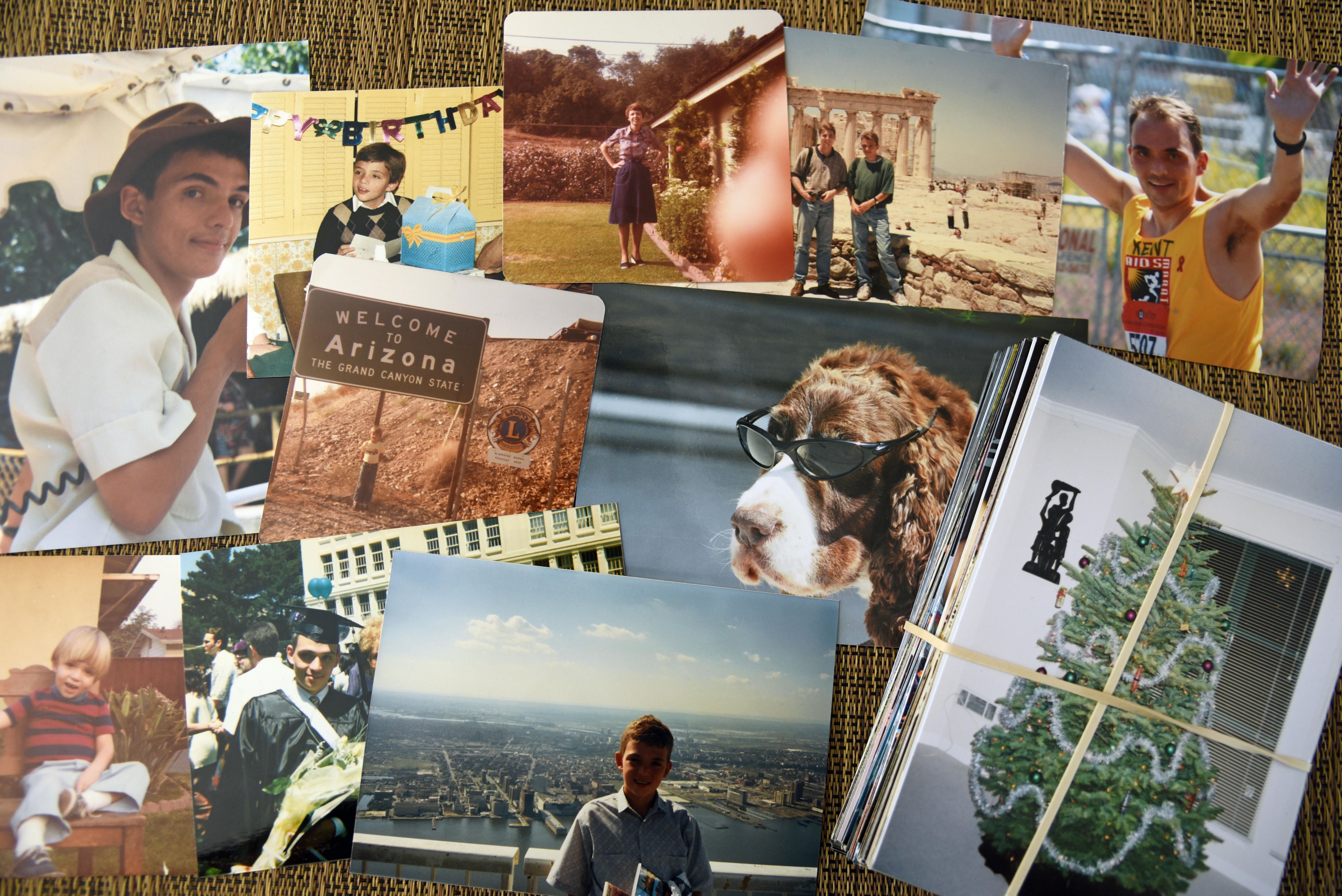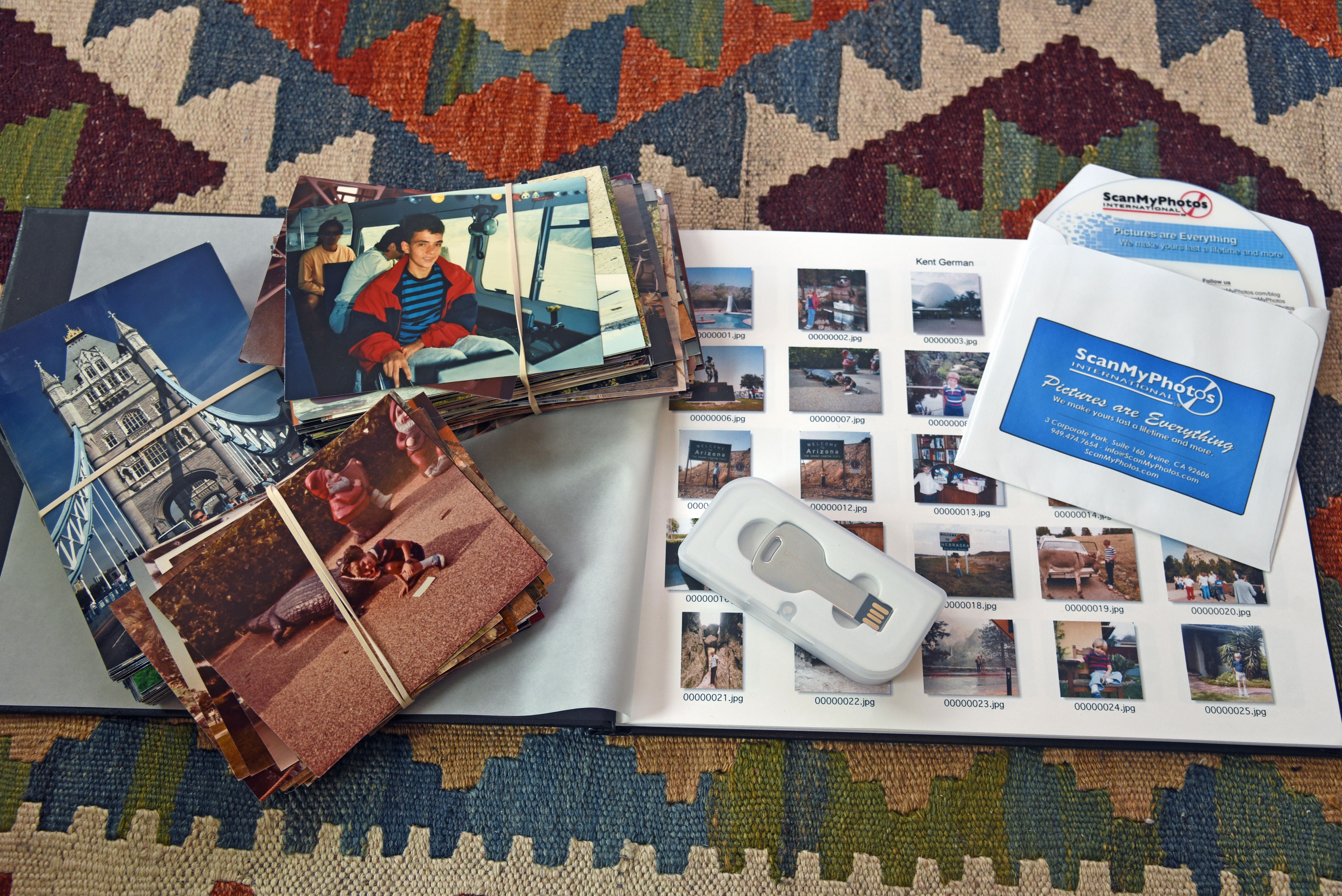Memories in a shoebox: Digitizing old photos unlocks a flood of mixed emotions

Two years ago, I finally scanned the hundreds of photos I'd shot in the decades before I bought a digital camera. Roughly 20 years of my life were crammed into three shoe boxes that had been in my parents' garage or stashed under my bed. Inside were many versions of my younger self: looking grossly unhappy on the first day of kindergarten, skippering a Jungle Cruise boat at Disneyland, and sitting on the steps of my first "adult" apartment in a pair of painfully '90s pleated pants.
Rather than marooning the photos again to another closet when we moved into a new house, I figured it was finally time to do something with them. It was partly an exercise in purging, but it was also a way to safeguard memories should disaster hit. I live in earthquake and fire-prone California, and storing old photos seemed as important as making a disaster kit.
It was a satisfying box to check off on the to-do list, and a task that took little energy to complete -- you can flip through photos while you're quarantine-binging TV. A word of warning, though: Trips down memory lane are usually emotional, filled with equal parts joy, sorrow and "Why did I ever wear that?"
When in doubt, outsource
Though I have a scanner, it works far too slowly (and I'm too lazy) to process more than a thousand photos (my husband contributed his own stash). So, I followed Sharon Profis' advice and carefully packed a box with prints and sent it to Scanmyphotos.com instead. Just choose the scanning and delivery package you want, pack a box and send it to the company's office in Irvine, California. When your scans are done, the box comes back to you, along with electronic copies of your scans and a book listing your shots. The company is continuing to operate during the pandemic.
My experience was great and it only took a week to get my photos back. If you have a box of pictures sitting around, it's an easy way to secure them. If you're pushing the 2,000-photo mark, go for the $145-prepaid box, which the company says will fit about 1,800 prints. If you don't have that many, scans start at 8 cents each.

Your life in a box
First, though, I had to go through my snaps one-by-one and decide which ones to scan. You may prefer to throw everything in a box and scan them all, but I was more discerning. I didn't need scans of the dozen photos I took of Mount Rushmore when I was 11. No, I wanted to save the snaps that really mattered.
My exploration started with the first photo I ever took -- my mom standing in our Southern California backyard in 1981. I was 7 years old and wanted to take her photo as a "thank you" for buying me my first roll of film. She's smiling under a bright July sun, next to my blurry finger covering part of the lens. I texted it to her, and she replied with a heart emoji and "Ahhh… you were just a little boy."
Sorting through the next 20 years. I saw Christmas mornings and birthdays, graduations, my sweet English Springer Whitney, a visit to the top of the World Trade Center with my late grandparents, and camping trips with my dad. I even saw my 12-year old self standing near the London building where I would live 30 years later.
Later came college keg parties with red plastic cups and the first few years of living on my own, when my energy for rambunctious nights out with friends (some of whom have left us) was far more robust than it is now. It was wonderful, awkward and painful to relive those memories all at once.
Occasionally, shots were blurry or cropped horribly, or my stray finger was back in the way, but that's the thing about film cameras: You don't know how your shots will look until they're developed. Digital cameras may have given us instant gratification and editing. But they've also taken away that marvelous suspense of waiting for your photos to come back from the store so you could tear open the pouch and relive that amazing holiday long after you returned home.
Free your photos
Sorting through prints also reminded me how the switch to digital cameras fundamentally changed what many of us do with our photos. As film photographers can attest, film means you have to be more discerning with each shot and that "did I get it right?" anticipation is part of the creative process. Sure, most of my prints may have ended up in those shoeboxes that I hardly opened, but I kept others front-and-center by pressing them into albums or putting them in frames.
Since I bought my first digital camera in 2002, though, far fewer of my photos make it off a memory card, even though there are countless easy ways to export them. There's just less incentive since I already know how they came out. Perhaps it's better that way -- printing only the best shots is far less wasteful -- but just like when you write for print rather than online, it's far more satisfying to hold your completed work in your hands than it is to see it flash by on a monitor. (Photos books are another great option to give your digital picture life.)
But by sorting and scanning old prints, I have the best of both the print and digital worlds. I still can leaf through my old photos when I'm feeling nostalgic, reminisce with my parents and embarrass longtime friends at milestone birthdays. Now these mementos also live in the digital realm, and if disaster does strike, I know they won't be lost forever.
Those pleated pants, though? Well... they go back in the shoe box.
You should read it
- Should you choose a digital camera?
- Basic guide when buying digital cameras
- How to adjust aperture and speed on popular digital cameras
- 6 tips to help take better night photos with a popular digital camera
- Learn about aperture in digital photography
- How to choose a semi-professional digital camera
- How to get photos from digital cameras
- Learn about white balance - White Balance in digital cameras
May be interested
- 11 signs to let you know that person is trying to hide his feelings
 are you happy or trying to appear so that no one touches emotions inside you? the following signs will expose your true state.
are you happy or trying to appear so that no one touches emotions inside you? the following signs will expose your true state. - 6 solutions to replace the best Google Photos
 google photos is one of the best photo apps for smartphones today. with unlimited memory, smart ai automatically stores photos and an integrated image editor makes it a winner, but that doesn't mean it's perfect.
google photos is one of the best photo apps for smartphones today. with unlimited memory, smart ai automatically stores photos and an integrated image editor makes it a winner, but that doesn't mean it's perfect. - Instructions for using memories album on iPhone in Photos
 the photos app on iphone has a memories feature that creates collections of photos and videos with music like a movie. each memory highlights an important person, place, or event from your phone's library.
the photos app on iphone has a memories feature that creates collections of photos and videos with music like a movie. each memory highlights an important person, place, or event from your phone's library. - How to Use Photos on macOS
 the photos app in macos has a bunch of improvements over the old photos and iphotos app from previous os x versions. photos will match all photos of specific people, create memories based on trips and locations, and allow you to view...
the photos app in macos has a bunch of improvements over the old photos and iphotos app from previous os x versions. photos will match all photos of specific people, create memories based on trips and locations, and allow you to view... - How to view memories on Messenger
 the new messenger app has updated the memories feature, allowing you to view chat memories with others right in the app.
the new messenger app has updated the memories feature, allowing you to view chat memories with others right in the app. - How to look for flood spots in Ho Chi Minh City on the phone
 you can view flooded spots and citywide traffic conditions on your phone with the udi maps app
you can view flooded spots and citywide traffic conditions on your phone with the udi maps app - How to View Story Memories on Instagram
 instagram has introduced a feature called memories similar to facebook's on this day feature, allowing you to review and reminisce about your old posts.
instagram has introduced a feature called memories similar to facebook's on this day feature, allowing you to review and reminisce about your old posts. - AI uses tweets to help researchers analyze the flood situation
 scientists at the joint research center - a european center for knowledge and science, describe in detail how real-time reporting information is posted by users on platforms. social media (especially twitter) can be helpful for the european flood warning system (efas).
scientists at the joint research center - a european center for knowledge and science, describe in detail how real-time reporting information is posted by users on platforms. social media (especially twitter) can be helpful for the european flood warning system (efas). - 5 tips to help you forget anything you want, no matter how bad it is
 psychologists have come up with some psychological tips to help you trick your brain into forgetting things to forget.
psychologists have come up with some psychological tips to help you trick your brain into forgetting things to forget. - How to Use iCloud Photos on iPhone, iPad, and Mac
 icloud photos lets you securely store photos, screenshots, videos, live photos, memories, and other items from the photos app in the cloud.
icloud photos lets you securely store photos, screenshots, videos, live photos, memories, and other items from the photos app in the cloud.










![[Review] Should I buy a GoPro Hero 7 Black camera? Detailed user guide](https://tipsmake.com/data/thumbs_80x80/[review]-should-i-buy-a-gopro-hero-7-black-camera-detailed-user-guide_thumbs_80x80_cQ4ltEWXW.jpg) [Review] Should I buy a GoPro Hero 7 Black camera? Detailed user guide
[Review] Should I buy a GoPro Hero 7 Black camera? Detailed user guide Top best selling Xiaomi travel cameras 2020
Top best selling Xiaomi travel cameras 2020 Compare Vietmap and Webvision camera with the most detail
Compare Vietmap and Webvision camera with the most detail Top travel camera for women
Top travel camera for women DSLR cameras for beginners
DSLR cameras for beginners Is RAW or JPEG the best format for photos?
Is RAW or JPEG the best format for photos?